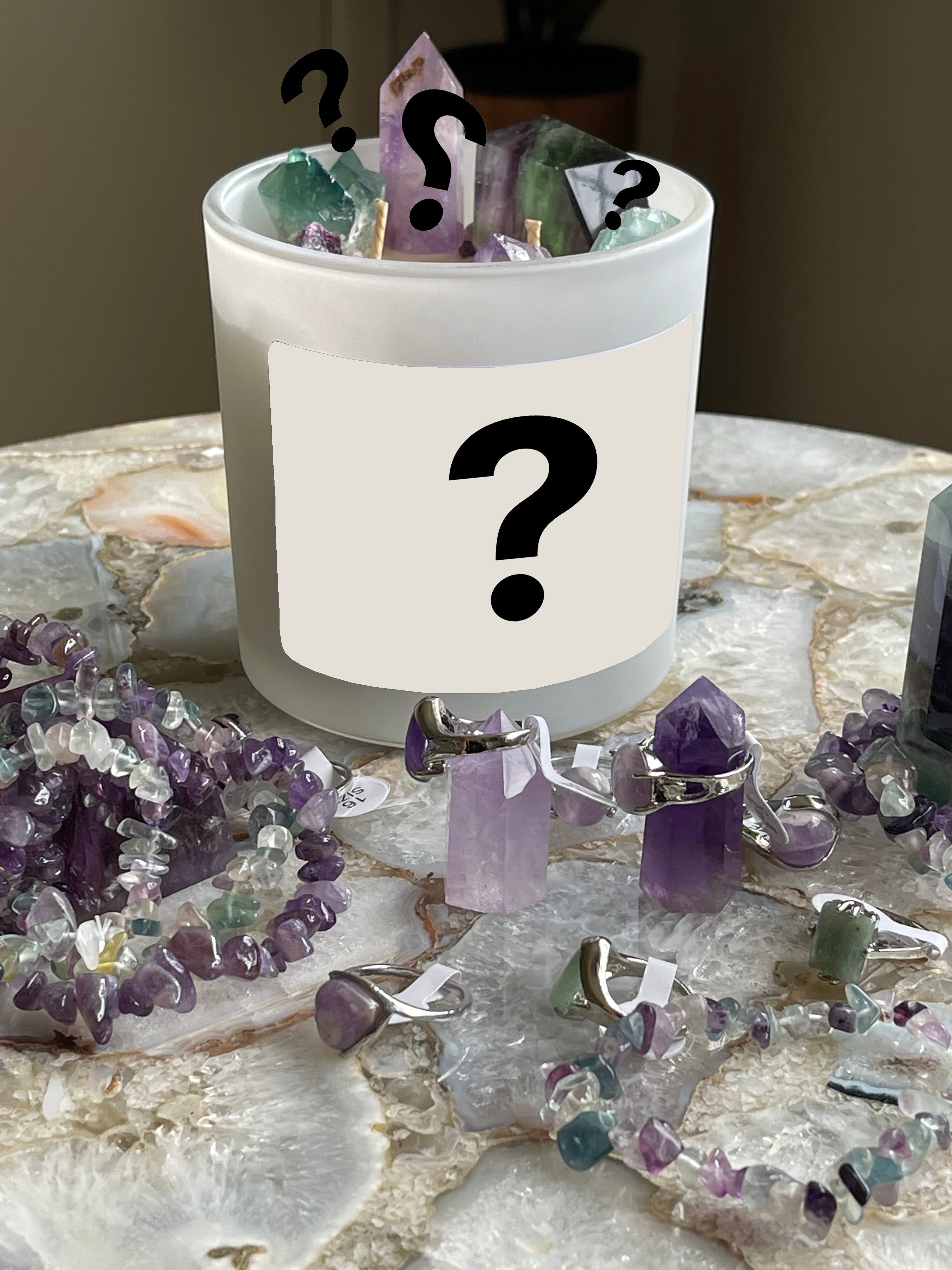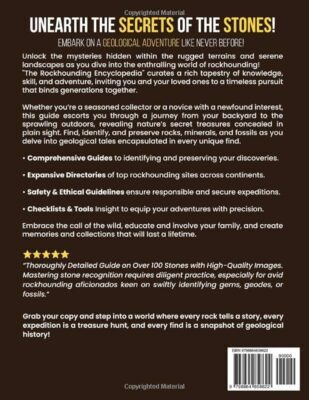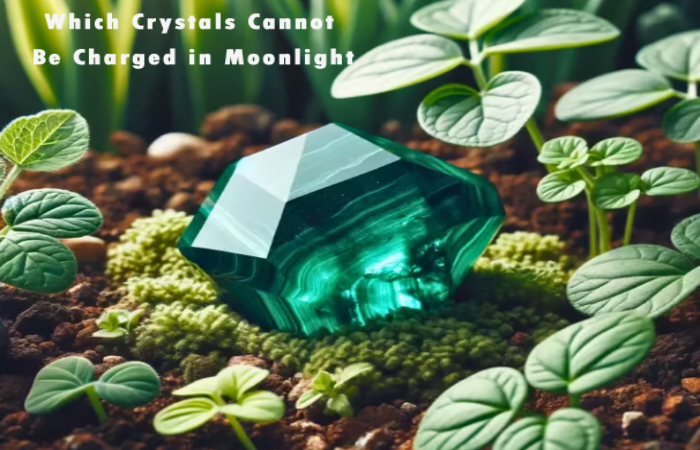Crystals are natural, solid substances with a well-defined geometric shape, while gems are cut and polished precious or semiprecious stones used in jewelry. Crystals form naturally through a process called crystallization, where materials solidify into an organized structure.
Understanding the world of minerals can be fascinating, especially when differentiating between crystals and gems. People often use these terms as synonyms, but they have distinct characteristics.
Crystals are admired for their natural geometric forms and are found in their raw state. Their unique shapes result from the orderly arrangement of atoms within their structure, leading to a wide array of fascinating forms. On the other hand, gems begin their journey as raw crystals or stones, and through meticulous cutting and polishing, they attain a lustrous beauty. Gems are specifically suited for the fine jewelry market. They’re valued for their rarity, durability, and, most importantly, their unrivaled allure.

Credit: www.amazon.com
Sparkling World Of Minerals
The world beneath our feet is a hidden gallery of sparkling treasures. From the deepest caves to the highest mountains, nature displays a dazzling array of crystalline beauty. This is a realm where minerals form into precious stones, capturing both the imagination and the science of discovery.
Let’s explore the captivating underground gallery and unearth the secrets of crystals and gems through this article.
Read: Which Crystals Cannot Be Charged in Moonlight
Crystals: Nature’s Artistry
Imagine walking into a natural museum where every exhibit is a masterpiece crafted over millennia. Each crystal is a unique sculpture formed by Earth’s very own hands. These are the building blocks of rocks, born from a recipe of elements that crystallize into specific geometric patterns. The clarity and shape of these natural wonders are a sight to behold:
- Quartz: A clear beauty found worldwide, famous for its hexagonal shape.
- Amethyst: The purple variant of quartz, coveted for its rich hues.
- Pyrite: Known as “fool’s gold,” it dazzles with its metallic luster and cubic structure.
Gems: Crowning Glory Of Jewelry
Stepping into the spotlight, gems are the royalty of the mineral kingdom. Adorning crowns and emblazoning jewelry, these stones are not just rare; they are the epitome of beauty and durability. Gemstones go beyond crystal clarity to include color, cut, and charisma. They add elegance to any piece of jewelry and stand the test of time.
| Gemstone | Color | Hardness |
|---|---|---|
| Diamond | Colorless to various colors | 10 (Hardest) |
| Ruby | Deep red | 9 |
| Sapphire | Blue to various colors | 9 |

Credit: www.walmart.com
Formation Secrets: Crystals Vs. Gems
The surface of our planet is full of sparkling wonders. The journey of crystals and gems from their formation to the moment they catch our eye is nothing short of extraordinary. This deep dive into their Formation Secrets unlocks the veil on their mysterious origins and what sets them apart.
The Geology Of Crystals
Crystals are the Earth’s hidden beauties. Born from a recipe of elements, heat, and pressure, their growth spans millennia. Structurally, they’re a marvel, with atoms arranged in symmetrical patterns. This order is their blueprint and it dictates their striking shapes and textures.
Key factors in crystal growth include:
- Mineral-rich solutions
- Perfect temperature conditions
- Suitable space for unhindered formation
Many crystals form in igneous and metamorphic rocks. Magma cools down or minerals in water form them. Earth’s canvas is vast and so are the spots where crystals can birth.
Read: What are Menthol Crystals Used for
Gemstones: A Rare Find
While all gems are crystals, not all crystals are gems. Gems are the royals of the crystal kingdom. Their rarity, durability, and desirability elevate them above their crystalline counterparts. Birthed under rare conditions, they wait to be discovered and admired.
| Gem Quality | Factors Influencing Value |
|---|---|
| Rarity | Lesser found equals higher value |
| Durability | Hardness ensures longevity and appeal |
| Color | Unique hues attract more attention |
Gems form in a variety of geological settings. Some come from volcanic eruptions, others from sedimentary processes. Each gem’s journey is unique, adding to its allure and story.
Mystic Shapes And Structures
The beauty of crystals and gems lies not just in their shimmering appearances but in their mesmerizing structures. Both of these precious earth-gifted treasures possess unique physical attributes that define their identity and value. Let’s explore the hidden marvels behind the angular faces and geometric elegance of these natural wonders.
The Lattice Of Crystals
At their core, crystals are strictly patterned arrays of atoms. This regular, repeating structure is called a lattice. Imagine a three-dimensional chessboard where each square is occupied not by a chess piece but by an atom or a molecule. This intricate arrangement is not just striking; it’s the blueprint for the crystal’s form.
These fundamental lattice patterns can result in well-known shapes such as cubes, pyramids, or hexagons. Pure magic in mineral form, crystals can have either simple flat planes or complex interlocking patterns. It’s these characteristic structures that catch your eye, often dictating the strength and color of the crystal.
- Cubic: Equal dimensions on all sides, like a simple dice.
- Hexagonal: Six-sided, like honeycomb patterns.
- Trigonal: Three-sided, pyramid-like shapes.
Cutting And Polishing: Transforming Gems
While crystals are enchanting with their natural angles, gems capture hearts through crafted brilliance. The raw beauty of a gemstone is brought out by master craftsmen. Their skilled hands cut and polish stones into forms that maximize their inherent glow.
The transformative journey from rough stone to dazzling gem involves cutting facets—a process that highlights the stone’s color, clarity, and, most importantly, its sparkle. Gem cutters use specific machines to carve precise angles into the gem’s surface, allowing light to dance within the stone.
- Round Cut: Maximizes light return for brilliance.
- Oval Cut: Elongates and flatters the gem.
- Princess Cut: Offers a modern geometric look.
Post-cutting, gems undergo polishing, a crucial step in bringing out the shine and sleekness of the finished product. Polishing removes minute scratches and buffs the gem to a high sheen. It’s this attention to detail that elevates a gemstone from simply being a mineral to becoming a piece of cherished jewelry.
Beyond The Naked Eye: Properties And Composition
To appreciate the allure of crystals and gems, we need to delve into their hidden world. The difference becomes clear once we understand their properties and composition. Crystals and gems are not just eye-catching; their beauty lies in their intricate details, many of which are invisible without scientific tools. Let’s explore the science behind these natural treasures.
Crystal Chemistry: Bonds And Molecules
The foundation of a crystal lies in its atomic structure. Crystals form when atoms bond in repetitive patterns. These patterns create the crystal’s shape. Imagine building blocks stacking in a consistent, orderly fashion. That’s similar to how crystals grow. Bonds can be covalent, ionic, metallic, or van der Waals, each giving rise to different crystal types.
- Covalent bonds make for very hard crystals like diamonds.
- Ionic bonds create crystals such as halite, known commonly as rock salt.
- Metallic bonds forge metal crystals found in pure metals like gold.
- Van der Waals bonds occur in softer crystals like graphite.
The chemical bonds affect a crystal’s properties, such as hardness, color, and melting point. As much as chemistry unlocks the secrets of crystals, another layer reveals the uniqueness of gems.
Evaluating Gem Qualities
Gems are crystals, but they stand apart due to their rarity, beauty, and durability. Gems undergo scrutiny that exceeds what the naked eye can see. Let’s break down the evaluation process.
| Quality | Description |
|---|---|
| Color | Hues must be vivid and evenly distributed. |
| Clarity | Fewer inclusions mean a higher value. |
| Cut | The facets should maximize light reflection. |
| Carat | Weight affects a gem’s worth but it doesn’t dictate its beauty. |
Gemstones possess unique characteristics such as luster and refractive index. Testing these aspects requires precise instruments. With modern tools, expert gemologists can determine the quality and authenticity of a gemstone.
By looking beyond the superficial, the dazzling world of crystals and gems reveals its depth. The chemistry of crystals and the stringent quality checks for gems showcase why each is valued in its own right.
Color And Clarity: A Visual Phenomenon
The allure of minerals goes beyond their rarity. Color and clarity play pivotal roles in distinguishing crystals from gems. These parameters turn stones into treasures, captivating human interest.
The Hue Of Crystals
Crystals sparkle with a unique color palette. Each type has a characteristic hue. This hue comes from the elements present during formation. For instance:
- Quartz – can be clear or colored by impurities.
- Amethyst – a purple form of quartz, owes its color to iron and other trace elements.
Clarity And Color In Gemstones
Gemstones are loved for their clarity and vibrant colors. A gem’s value often rests on these traits. Clarity means the gem is free from blemishes. A higher clarity often equals a more desirable gem. Diamonds, rubies, sapphires, and emeralds are examples. Their ratings include:
| Gemstone | Color | Clarity Grade |
|---|---|---|
| Diamond | Colorless to Yellowish | Flawless to Included |
| Ruby | Red | Eye Clean to Included |
| Sapphire | Blue to Violet | Eye Clean to Included |
| Emerald | Green | Eye Clean to Highly Included |

Credit: www.ditd.com.au
Uses In Technology And Fashion
The worlds of technology and fashion often intersect. Crystals and gems play a crucial role in both. They are not just beautiful natural wonders but also integral components in various industries. Let’s explore their unique uses in technology and fashion.
Crystals In Industry And Tech
Crystals are more than sparkling objects. They are functional in several tech applications. Their precise structure makes them perfect for industrial use.
- Quartz, for its piezoelectric properties, is in watches and electronics.
- LEDs and semiconductors rely on crystals for their function.
- Silicon crystals are at the heart of computer chips.
These applications demonstrate the tech world’s reliance on the unique properties of crystals.
Gemstones: Symbols Of Status And Style
Gems have long been tied to fashion and status. They embody luxury and are sought after for their beauty.
- Diamonds often signify wealth and are a staple in jewelry.
- Rubies and emeralds serve as centerpieces for haute couture.
- Pearls add a classic touch to modern outfits.
Gems contribute not only beauty but also a sense of prestige to fashion items.
Valuation And Rarity: Market Perspective
The thrilling world of crystals and gems is both beautiful and complex. These natural treasures come from the earth, each with a unique story. From dazzling diamonds to serene quartz, people have marveled at their beauty for centuries. But their value and rarity? That’s a tale told through the eyes of the market.
Let’s dive deep into how experts and traders assess the worth and scarcity of these precious stones.
Assessing The Value Of Crystals
Crystals, often cherished for their geometric beauty, have a value decided by various factors. Determining their market worth involves more than just looks.
- Size: Larger pieces can command higher prices.
- Purity: The clearer, the better.
- Formation: Unique shapes may increase value.
- Color: Vibrant and rare hues are highly prized.
A crystal’s origin and the story behind it can also boost its appeal to collectors. This heightens demand, which can lift its market value.
The High Stakes Of Gem Trading
Gems are the royalty of minerals. Their market is a high-stakes arena where rarity reigns. Precious gems like rubies and emeralds fetch top dollar, but why?
| Gemstone | Factors Affecting Value | Rarity |
|---|---|---|
| Diamonds | Cut, Clarity, Carat, Color (4Cs) | High-quality diamonds are scarce |
| Rubies | Deep red color, known as “pigeon’s blood” | Large, quality rubies are rarer than diamonds |
| Emeralds | Inclusions or ‘jardin’, acceptable; vivid green color favored | Fine emeralds are extremely rare |
Each gemstone is evaluated by a standardized system, such as the 4Cs for diamonds. However, the emotional connection and historical significance can drastically drive up their market desirability.
The gem trade involves auctions, private collectors, and high-end jewelry stores. The competition is fierce, and the stakes are high. This makes gemstones a sparkling investment for those who understand the market’s pulse.
Frequently Asked Questions On Difference Between Crystals And Gems
What Defines A Crystal?
Crystals are solid materials whose atoms are arranged in highly ordered, repeating patterns extending in all directions, known as crystalline structures.
How Do Gems Differ From Crystals?
Gems are precious or semi-precious stones that are typically cut and polished for use in jewelry, while crystals are uncut naturally occurring substances.
Are All Crystals Considered Gems?
Not all crystals are considered gems; only those with desirable qualities such as beauty, rarity, and durability are classified as gems.
What Makes Gems Valuable?
Gems gain value based on factors like rarity, hardness, and the quality of the cut, polish, and color which define their appeal in jewelry.
Can Crystals Be Made Into Gems?
Yes, some crystals can be cut and polished to create gemstones, but only if they possess the necessary aesthetic characteristics and hardness.
Conclusion
Understanding the nuances between crystals and gems can greatly enhance your appreciation for these natural treasures. Each offers distinct characteristics and uses, from aesthetic allure to healing properties. Remembering that all gems are crystals but not all crystals qualify as gems will serve as a helpful guide.
Embrace the beauty and functionality of these earthy wonders, and let your knowledge shine as brilliantly as the specimens themselves.



